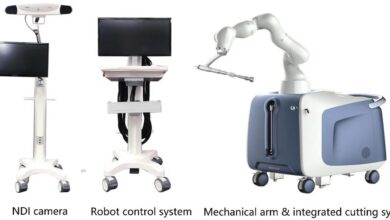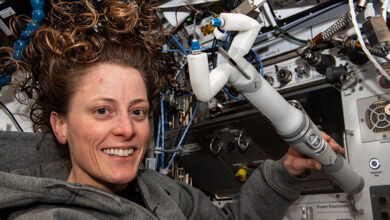35-gram Hopcopter revolutionizes robotics with its hops and flight

Nature provides many remarkable instances of terrestrial and aerial mobility. Inspired by this type of multimodal movement, a team of engineers has developed a highly efficient hybrid robot that can hop and fly.
Meet “Hopcopter,” a 35-gram hybrid robot that can jump and fly, and spin with incredible speed and precision.
The robot consists of a typical mini-quadcopter with a telescopic leg that is passive. The Hopcopter uses its existing rotors to actuate in its airborne phase, unlike other hopping robot designs that depend on stance phase leg actuation.
At a leap height of 1.63 meters, the Hopcopter achieved an average vertical hopping speed of 2.38 meters per second. Researchers at the City University of Hong Kong say this surpasses the maximum agility for robots reported.
The details of the team’s research were published in the journal Science Robotics.
Continuous hopping achieved with Hopcopter
The Hopcopter integrates a micro-quadcopter with a telescopic leg mechanism. This leg comprises a rigid upper section, a sliding rod as a lower section, and rubber bands as the elastic element.
The upper leg, made of carbon fiber rods, is firmly attached below the quadcopter, while the lower leg, featuring a pointy foot and 3D-printed hooks, facilitates hopping. Meanwhile, bearings restrict motion to vertical translation, ensuring stability.
Rubber bands, pre-stretched and anchored between the upper and lower legs, provide elastic recoil. Besides, reflective markers aid pose measurements. Actuation during aerial phases allows continuous hopping, distinct from latched elastic actuation.
Moreover, the long telescopic leg, over twice the width of the airframe, simplifies stance dynamics. At the same time, the pre-stretched rubber bands enable the leg to overcome the robot’s weight, a feature absent in prior designs.
These attributes permit the robot to be treated as a point mass during the stance phase, simplifying dynamics. The researchers claim the innovation facilitates continuous hopping locomotion, distinguishing it from prior intermittent jump-capable quadrotors.
Versatile hybrid mobility
The Hopcopter has undergone rigorous validation via controlled hopping experiments, demonstrating precise trajectory tracking and accurate prediction of takeoff states.
A pioneering aerodynamic stabilizer has enabled self-stabilized hopping without external velocity feedback. It ensures robust performance across diverse terrains in field tests.
Endurance trials highlighted substantial operational time extension with intermittent thrust, leading to remarkable power efficiency gains compared to continuous flight.
As per the researchers, the Hopcopter achieves agility without complex triggering mechanisms by featuring a telescopic leg. It reaches a maximum velocity of 2.38 m/s and jumps heights from 0.6 to 1.6 m, setting new agility benchmarks for jumping robots.
Leveraging both flying and hopping capabilities, the Hopcopter swiftly adjusts speed and direction. This capability mitigates collision damage through agile jumping maneuvers.
Autonomous hopping control, achieved through the integration of attitude control and the stabilizer, ensures stable dynamics without position feedback, enabling over 56 consecutive jumps with upright landings.
The team claims that the Hopcopter’s hopping mechanism offers energy-efficient locomotion. It enhances mission duration and range compared to rotorcraft and legged robots.
Its passive leg design could be seamlessly integrated into conventional rotorcraft. It will enable synergistic hybrid locomotion for tasks like transporting heavy payloads through a series of hops.
The Hopcopter represents a paradigm shift in robotics. It showcases the benefits of integrating flight and hopping capabilities for versatile and efficient mobility across diverse scenarios.



